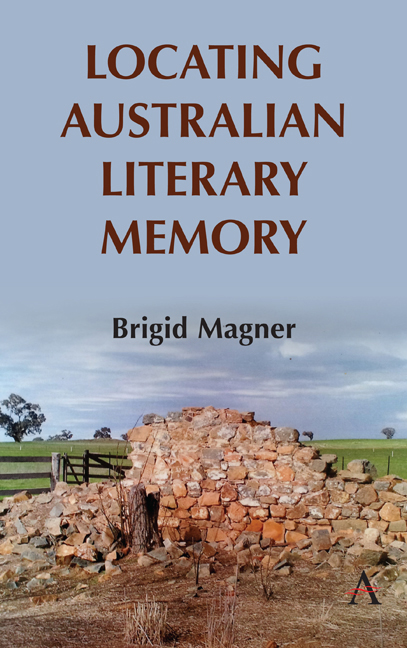Book contents
- Frontmatter
- Contents
- List of Illustrations
- Acknowledgements
- Introduction: Remembering Absent Authors
- Chapter One Adam Lindsay Gordon's Grave
- Chapter Two Joseph Furphy in the Riverina
- Chapter Three Henry Handel Richardson and the Haunting of Lake View
- Chapter Four Henry Lawson Country
- Chapter Five The Multiple Birthplaces of A. B. ‘Banjo’ Paterson
- Chapter Six Nan Chauncy's Sanctuary
- Chapter Seven Living Memorials: The Houses of Katharine Susannah Prichard and Eleanor Dark
- Chapter Eight Statue Mania: P. L. Travers and the Appeal of Mary Poppins
- Chapter Nine Kylie Tennant's Hut
- Chapter Ten The David Unaipon Monument at Raukkan
- Conclusion: Towards an Expanded Repertoire of Literary Commemorations
- Notes
- Index
Conclusion: Towards an Expanded Repertoire of Literary Commemorations
Published online by Cambridge University Press: 10 December 2019
- Frontmatter
- Contents
- List of Illustrations
- Acknowledgements
- Introduction: Remembering Absent Authors
- Chapter One Adam Lindsay Gordon's Grave
- Chapter Two Joseph Furphy in the Riverina
- Chapter Three Henry Handel Richardson and the Haunting of Lake View
- Chapter Four Henry Lawson Country
- Chapter Five The Multiple Birthplaces of A. B. ‘Banjo’ Paterson
- Chapter Six Nan Chauncy's Sanctuary
- Chapter Seven Living Memorials: The Houses of Katharine Susannah Prichard and Eleanor Dark
- Chapter Eight Statue Mania: P. L. Travers and the Appeal of Mary Poppins
- Chapter Nine Kylie Tennant's Hut
- Chapter Ten The David Unaipon Monument at Raukkan
- Conclusion: Towards an Expanded Repertoire of Literary Commemorations
- Notes
- Index
Summary
Most monuments cannot survive the decay of their cultural matrix.
– Yi-Fu TuanWe are living in an era in which earlier commemorations are being questioned and even removed, as with statues of Robert E. Lee in Texas and Cecil Rhodes in Cape Town. The statue of Captain Cook in Hyde Park, Sydney, has been vandalised, revealing dissent about what he represents to the nation. To date, literary commemorations have not tended to receive the same treatment, but there is increasing discussion about the lack of representation of Indigenous authors, women writers and authors from non-Anglo backgrounds.
The Australian terrain has been thoroughly mapped by nationalist heritage practices which may no longer relate to contemporary values. As elsewhere, the focus has moved to accommodating and recognising those who have been excluded. But the problem of what to do with old, irrelevant relics remains: should they be removed, annotated or otherwise modified? Just because they are monumental in form, it does not mean that they must remain on display in perpetuity. Monuments usually have quite clear messages inscribed upon them, but their meanings can subsequently be altered or reinterpreted by changing their framing. There are memorial texts which are offensive, or no longer meaningful, that might be edited out of the national story by being recycled, put into storage or even destroyed.
John R. Gillis observes that the old monuments ‘have lost much of their power to commemorate, to forge and sustain a single vision of the past, but they remain useful as times and places where groups with very different memories of the same events can communicate, appreciate, and negotiate their respective differences’.
Up until the 2000s, literary memorials to ‘great’ white men have dominated. Sue-Anne Ware argues that Australia's memorial landscape is developing away from formal, official sites and objects of memory, which are separate from people's daily lives. She draws attention to the creation of ‘anti-memorials’ which force people to question the rationale behind traditional memorial designs, especially the ways in which they reflect collective public memory. Chris Healy has proposed a shift towards ‘vernacular’ heritage which is ‘particular and lived’ rather than ‘general and abstract’.
- Type
- Chapter
- Information
- Locating Australian Literary Memory , pp. 213 - 218Publisher: Anthem PressPrint publication year: 2019

